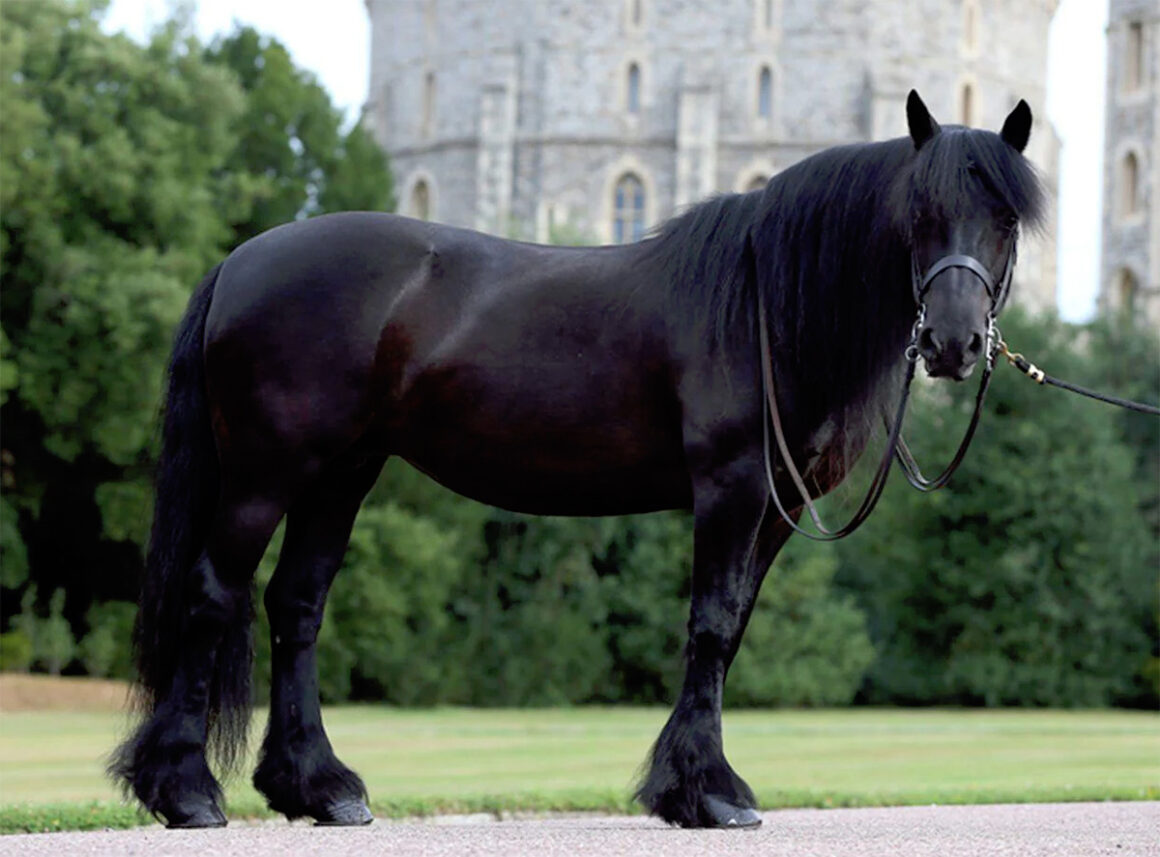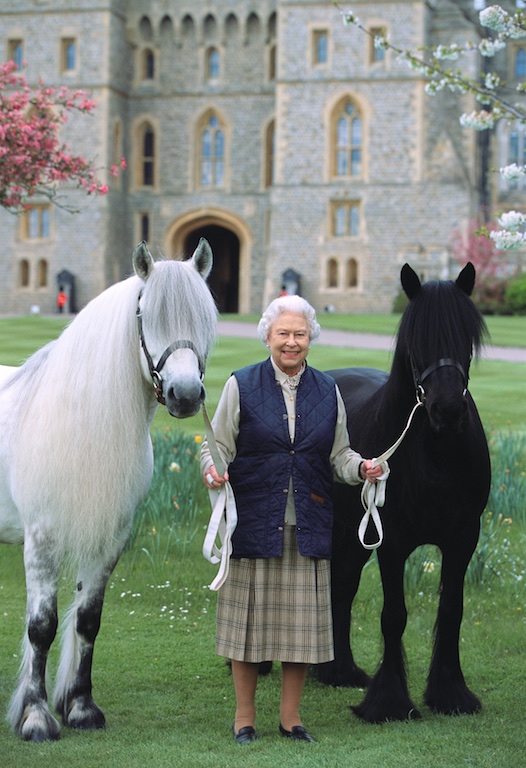Fell Ponies are intricately woven into the history of England. They remain popular and well-known today because of their connections to the Royal Family. This hardy pony breed is strikingly uniform with their black coats, abundant mane and tail, and kind personalities. They helped build the country, transporting people and goods for centuries, before evolving into pleasure riding and driving mounts.

Ponies have a special place in the hearts of all equine enthusiasts, and those that admire horses from afar as well. Many small children dream of owning a pony, and that just might be a Fell Pony for children in England. The breed originated in northern England, becoming hardy as they survived the tough climate, and they have become a popular riding and driving mount today. Fell Ponies are known for their striking good looks and uniformity as a breed. Many have black coats with their signature flowing mane and tail.
History of Fell Ponies
The upland section of northern England is a harsh environment, with challenging terrain and weather. It’s this harsh environment that fostered the early Fell ponies and created the breed that is so beloved.
The breed’s history dates to the Roman arrival. Their Friesians were crossed with local stock to help create several distinct breeds. Vikings used the Fell ponies to pull their sleds, for riding, and for other uses. They worked in the mines, hauling iron and coal, among other products. Fell ponies played a huge role in transporting wool and keeping rural communities connected to the outside world by providing transportation.
Fell ponies worked on the western side of the Pennines upland range, while the Dales Pony, a cousin, was on the eastern slopes. The Fell is smaller and more petite than the Dales Pony, although they share similar ancestry. The Fell Pony Society in the United Kingdom was formalized in 1922. Their purpose is to preserve the purebred pony as they had become popular for outcrossing with other breeds. The North America Society started in 2001.
Breed Characteristics
Fell ponies are true to type and breed characteristics, creating a breed that’s uniform and easily distinguished. The average height is 13 hands, and the breed registry won’t allow them to exceed 14 hands.
They have large, intelligent eyes on a pretty and chiseled heads. All ponies have a laid-back and sloping shoulder, which is imperative for the comfortable gaits the breed is known for. The breed is muscular with strong hindquarters.
Bay and brown are two of the most popular colors, with black becoming more prevalent in the 1900s, eventually becoming the most common color. Fell ponies are also grey, and any color can have a small star, although more than 50% of the breed has no white markings. Excessive white markings are discouraged. Those with excessive white markings, as well as chestnut, piebald, and skewbald, are registered in section X.
Fell ponies are known for their steady and kind personality. This also makes them popular mounts at lesson and therapeutic equine programs, among others. They are also extremely hardy, and the saying is they are as hard as the iron they once transported. Ponies don’t require as much feed as others and can live outside in most conditions.
Friesian Mini-Me
The Fell Pony has understandably earned a reputation as the Friesian mini-me. It’s hard to dispute the striking similarities between the breeds, from the black coats, beautiful manes, and tails to the ability to steadily trot in an animated style for long distances.
The Romans and others imported Friesians to England when they arrived in 55 BC. The left behind their stallions when they departed, crossing with local horses, so the Fell and other British breeds do have Friesian bloodlines. While most of these other breeds merged or became extinct, the Fell pony still exists and maintains its similarity to their ancestor.
Fell Ponies Today

Today, Fell Ponies are known for their exceptional trot; which is ground-covering and smooth. There is plenty of knee and hock action at the trot. Their walk is also fast, and generations of living in tough countryside mean they’re very sure-footed.
The breed is considered a rare breed but fairly secure because they are such popular riding ponies and well-known thanks to the royal family’s enjoyment of them. The late Prince Phillip of England had a team of Fell Ponies that he regularly drove. The late Queen Elizabeth competed with Fell Ponies beginning in her childhood; her grandfather also had Fell Ponies. She was a patron of the Fell Pony Society and many of her favorite equines over the years belonged to the breed.
They are used by both small adults and children. Many riders claim that Fell ponies have a sixth sense, helping to avoid dangerous situations. These traits are again proved every year at the performance trials in the United Kingdom. Jumping, pleasure riding, driving, pony trekking, endurance, light farm work, therapeutic riding, dressage, and showing are among the many disciplines where Fell Ponies excel.
Sources: Fell Pony Society, Fell Pony Society of North America, Oklahoma State University, The Livestock Conservancy, and Country Life.
